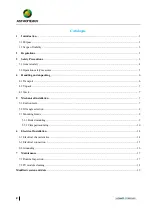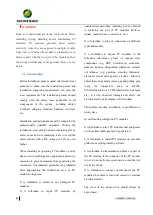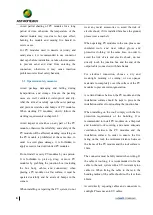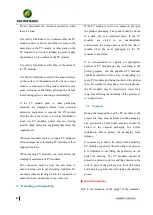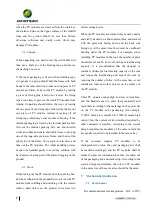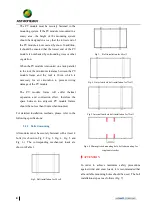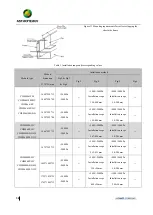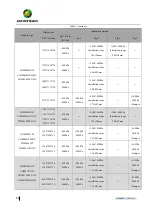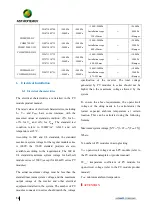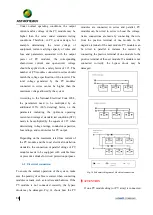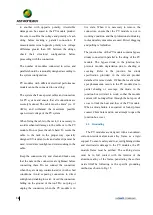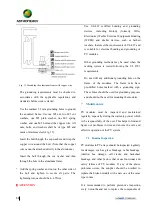
7
when the PV modules are removed from the container,
the distance between the upper surface of the forklift
tines and the ground should be less than 80mm,
otherwise collisions may easily occur, which may
damage PV modules.
4.2
Unpack
When unpacking, you need to tear the stretch film first,
then use a knife to cut the binding tape, and remove
the packing box cover.
If the inner packaging is fixed with anti-falling tape,
two people in a group should hold the frame with both
hands in the same direction to take out one piece of PV
module each time. Take out the PV module by tearing
a piece of fixing glue, and do not remove the fixing
tape at one time to prevent the whole PV module from
tipping. Unpacking should follow the steps of tearing
off one piece of the fixing tape followed by taking out
one piece of PV module, instead of tearing off all
fixing tape which may cause module collapsing. If the
internal packaging is fixed by the internal packing belt,
first cut the internal packing belt, use anti-inverted
sticks and other non-sharp and stable items to prop up
one of the long-side enclosure frame, and then cut the
other side of the frame. Two people in turn move and
take out the PV modules. The whole handling process
needs to be handled gently to avoid any collision with
hard objects and any part of the frame dragging on the
ground.
4.3
Stack
When taking out the PV module from the packing box,
put the cardboard on the ground first to prevent the PV
module from colliding and scratching with the cement
surface, hard object on the ground, color steel tile,
metal corrugated, etc.
When the PV modules are stacked, they must be neatly
and stably stacked on a horizontal surface, and stacked
with the glass side facing down and the back side
facing up. At the same time, there must be cardboard
bedding under the PV modules. For example, when
installing PV modules on the roof, the number of piles
should not exceed 20. For roofs with poor load-bearing
capacity, it is recommended that the designer or
installer evaluate the load-bearing capacity of the roof
and reduce the load-bearing unit area of the roof by
reducing the number of piles. At the same time, avoid
installation tools and other objects on the surface of
the PV module.
Chint PV modules adopt high and low current bins,
and the handlers need to place them separately and
mark them according to the markings on the power list
on the PV module outer packaging (for example,
270W-L means low current bin; 270W-H means high
current bin; the current division method required by
other customers is similar); According to the system
design requirements, modules of the same current bin
are usually required to be installed in the same array.
If the customer requires PV modules to be
distinguished by color, the outer packaging box shall
be marked accordingly, and the PV modules shall be
marked to prevent confusion when they are taken out
of the packaging box and stacked up. According to the
system design requirements, the color of PV modules
in the same row or the same array should be the same.
5
Mechanical installation
5.1
Environment
Recommended ambient temperature: -20°C to 50°C;


